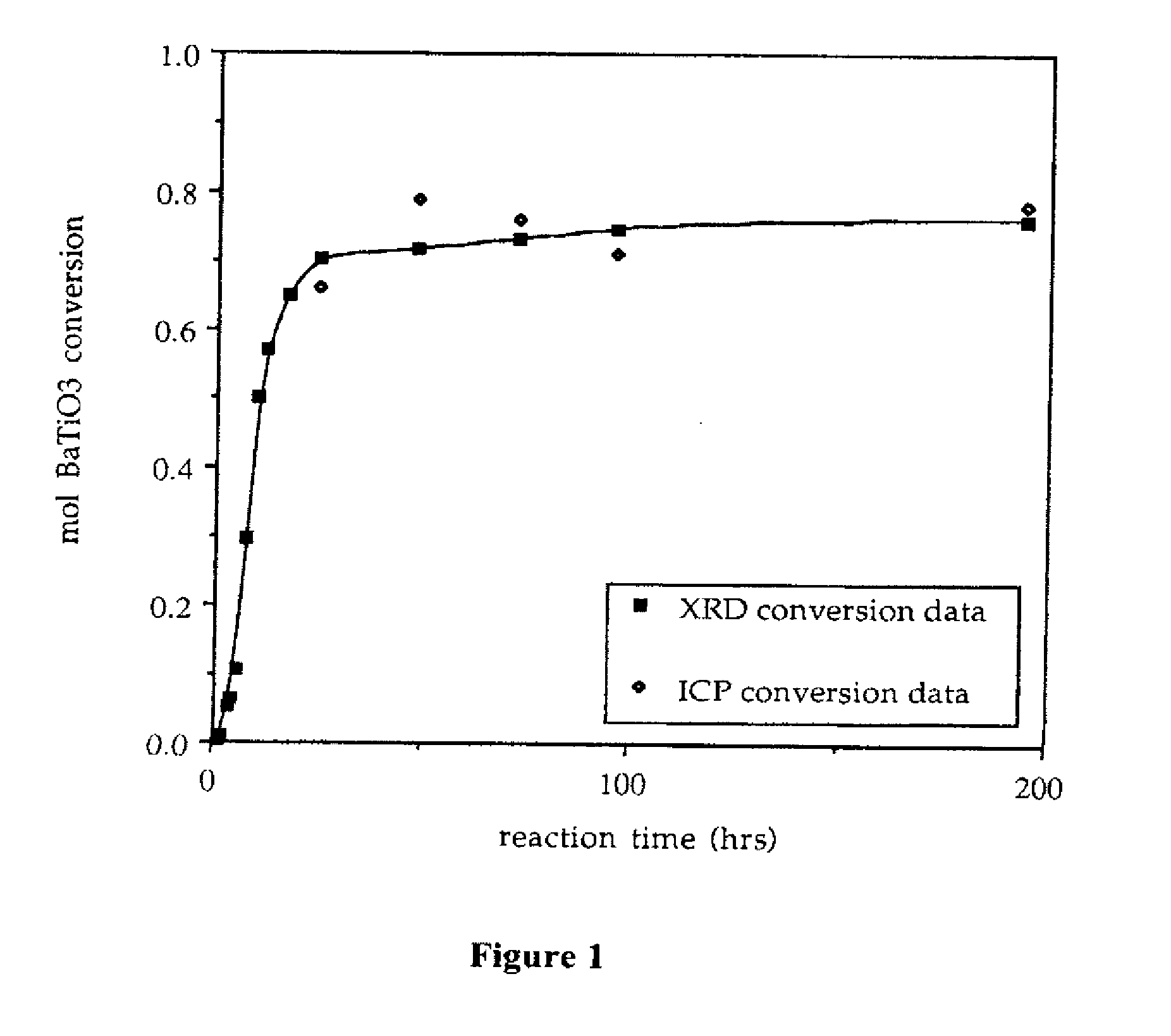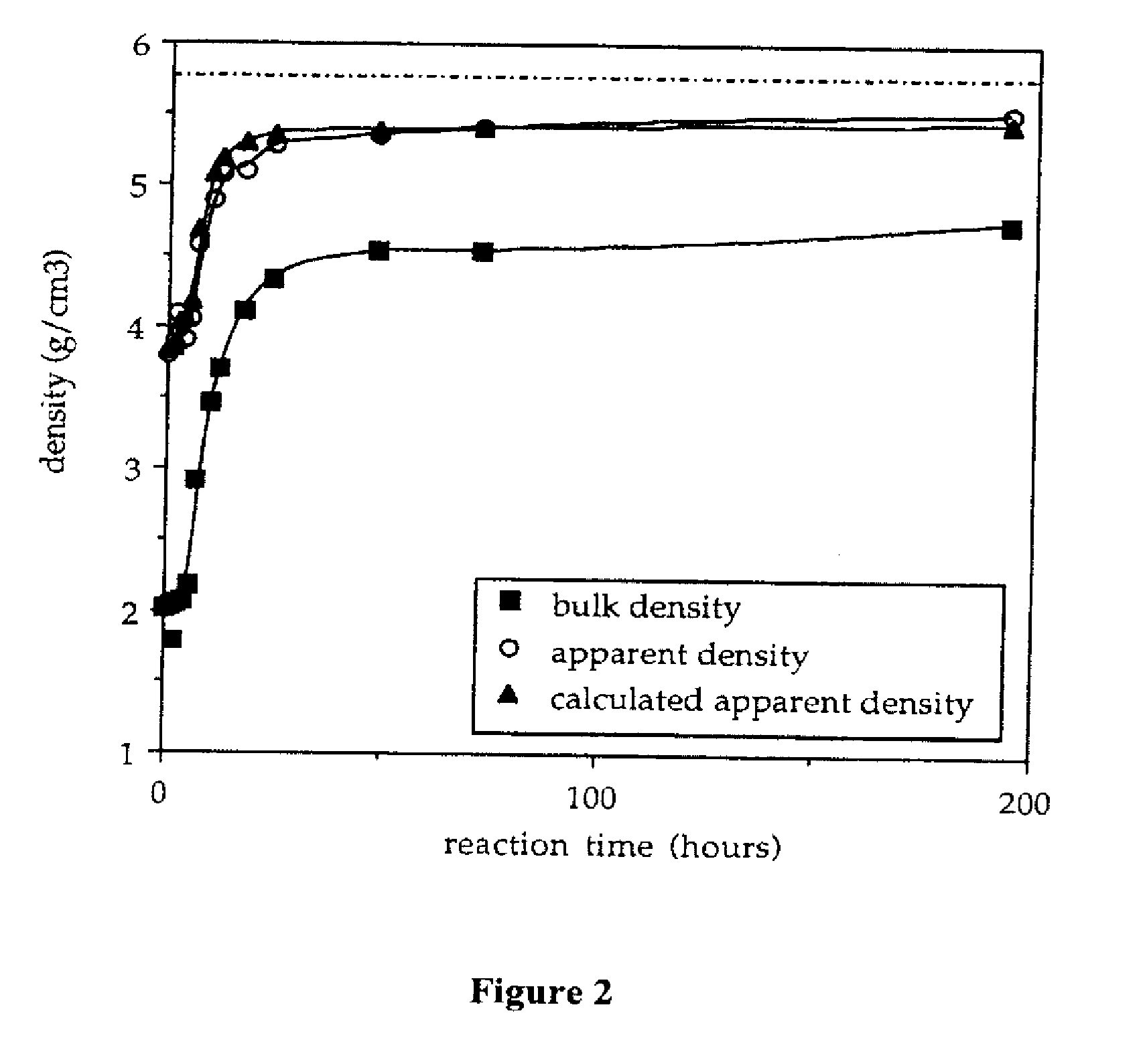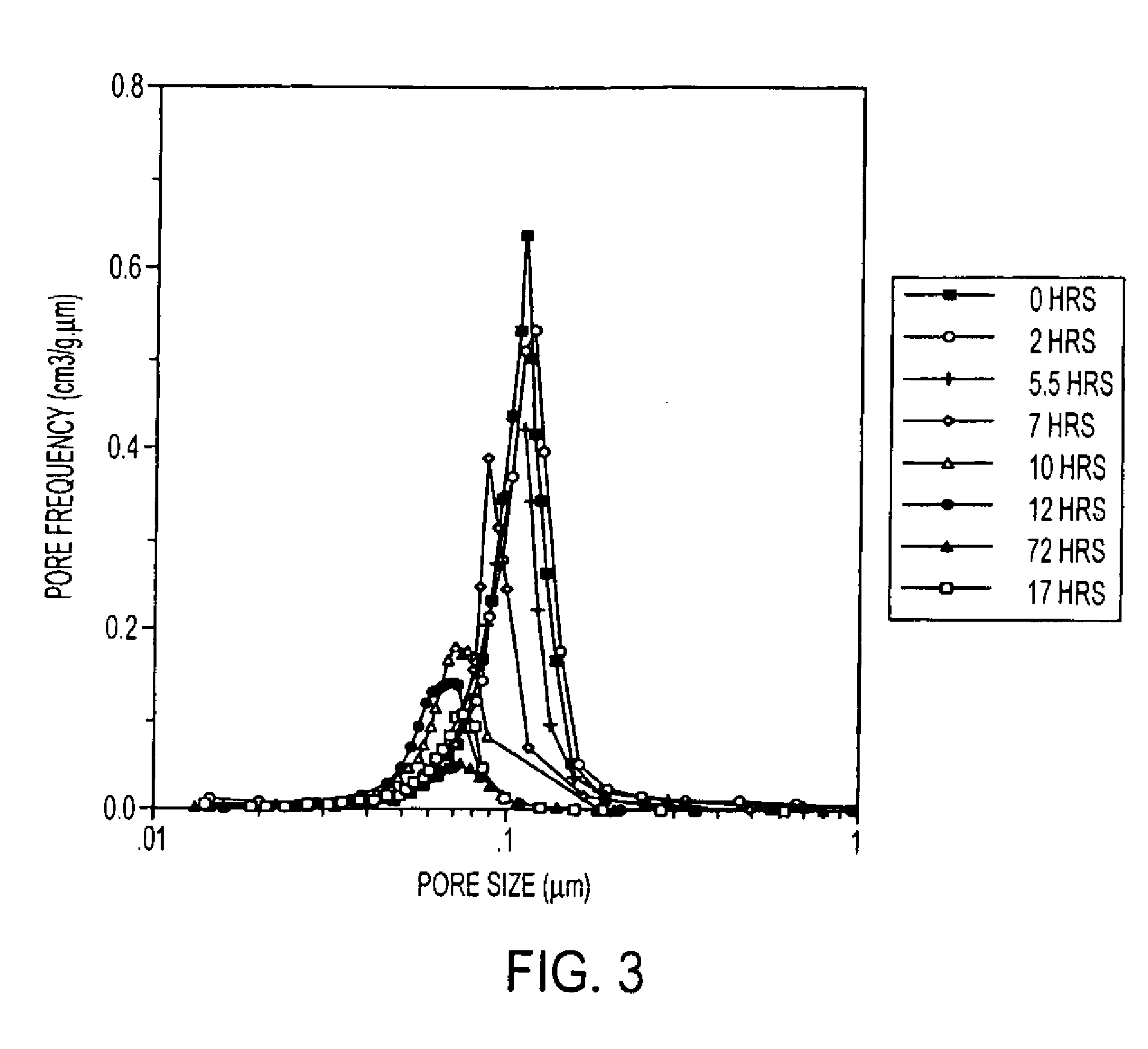Method of hydrothermal liquid phase sintering of ceramic materials and products derived therefrom
- Summary
- Abstract
- Description
- Claims
- Application Information
AI Technical Summary
Benefits of technology
Problems solved by technology
Method used
Image
Examples
working examples
Non-Limiting Working Examples
Example 1
Formation of Sintered Barium Titanate (BaTiO3) Ceramic Material
[0075]Preparation of Green Compacts
[0076]Compacts (1 inch diameter, 2-3 mm in width) of titania anatase (TiO2) were formed in a circular die press at pressures of about 100 MPa; Accordingly, 50% dense titania compacts were obtained. The “green” compacts were then fired at P temperature below 500° C. to burn out the binder used in the preforming steps.
[0077]The green compacts weighed about 2.5 g after firing.
[0078]Hydrothermal Liquid Phase Sintering of Compacts
[0079]The green compacts were infiltrated in 41.2 mL of a 1 molar solution of barium hydroxide Ba(OH)2.8H2O at various reaction times, ranging from 1 hour to 194 hours at a temperature of 90° C. The degree of filling in the autoclave was about of 75-80%, and involved water vapor pressures of about 2 atm. The process was carried out in an excess of barium ions, so that the molar ratio of barium to titanium (Ba:Ti) was about 1.2:1...
example 2
Formation of Sintered Strontium Titanate (SrTiO3)
[0083]Two compacts, weighing a combined 7.402 g, were obtained by the procedure similar to that described in Example 1 by dry pressing titanium dioxide powder. Next, an aqueous solution of Sr(OH)2.8H2O (27.00 g) in distilled deionized (DI) water (53.01 g) was prepared. The compacts were then placed in a Telfon® net and immersed in a 90 mL Telfon® vessel containing the strontium hydroxide solution. The vessel was sealed and placed in a preheated (105° C.) oven for 24 hours. Subsequently, the compacts were rinsed in 50 mL of an aqueous ammonium acetate buffer (pH about 5.0) for 10 minutes and filtered under vacuum. The sintered compacts were then dried at 100° C. in an electric oven overnight.
example 3
Formation of Sintered Barium Strontium Titanate (Ba0.5Sr0.5TiO3)
[0084]Two titanium dioxide compacts, weighing a combined 7.565 g, were placed in a Teflon® net and immersed into a 90 mL Teflon® vessel containing a basic solution prepared by dissolving Sr(OH)2.8H2O (13.975 g) and Ba(OH)2.8H2O (16.612 g) in DI water (59.430 g). The sealed vessel was then placed in a preheated (105° C.) oven and kept there for 26 hours. Thereafter, the compacts were rinsed in 50 mL of ammonium acetate buffer (pH about 5.0) for 10 minutes and filtered. The product compacts were then dried at 100° C. in an electric oven overnight.
PUM
| Property | Measurement | Unit |
|---|---|---|
| porosity | aaaaa | aaaaa |
| residual porosity | aaaaa | aaaaa |
| pressure | aaaaa | aaaaa |
Abstract
Description
Claims
Application Information
 Login to View More
Login to View More - R&D
- Intellectual Property
- Life Sciences
- Materials
- Tech Scout
- Unparalleled Data Quality
- Higher Quality Content
- 60% Fewer Hallucinations
Browse by: Latest US Patents, China's latest patents, Technical Efficacy Thesaurus, Application Domain, Technology Topic, Popular Technical Reports.
© 2025 PatSnap. All rights reserved.Legal|Privacy policy|Modern Slavery Act Transparency Statement|Sitemap|About US| Contact US: help@patsnap.com



